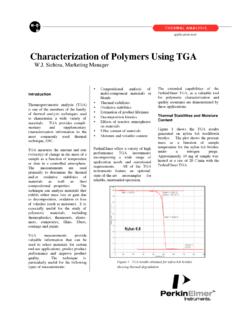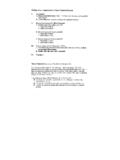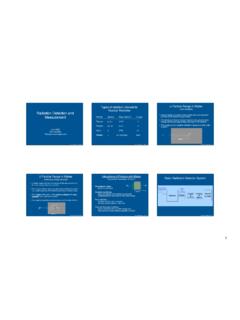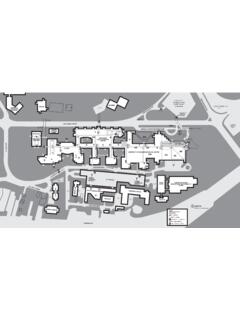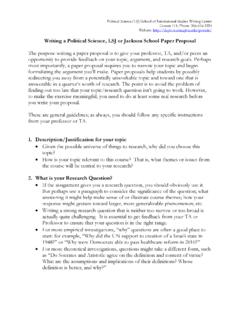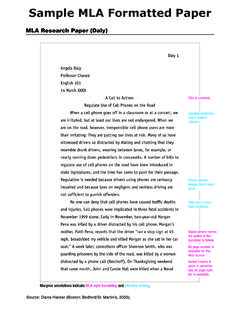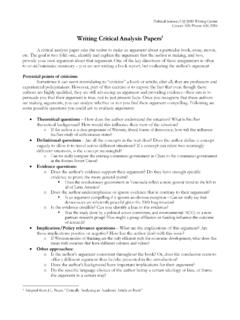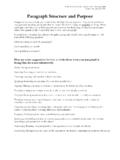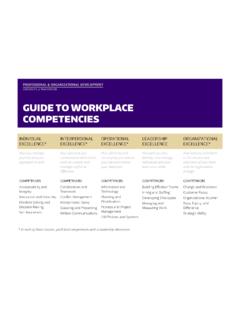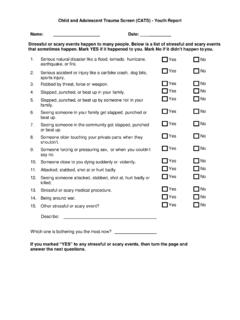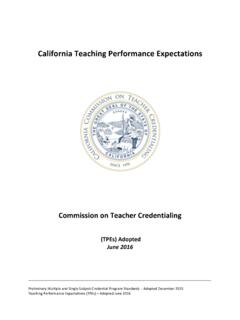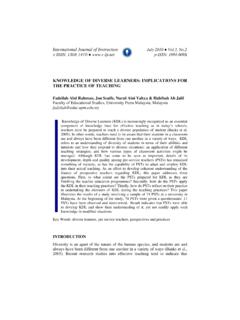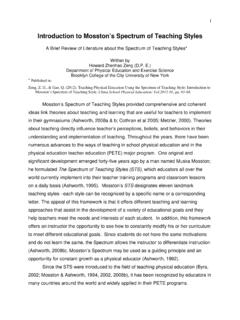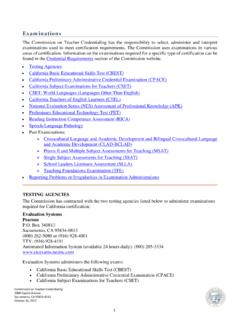Transcription of Those Who Understand: Knowledge Growth in Teaching Lee …
1 Those Who Understand: Knowledge Growth in TeachingLee S. ShulmanEducational Researcher, Vol. 15, No. 2. (Feb., 1986), pp. URL: Researcheris currently published by American Educational Research use of the JSTOR archive indicates your acceptance of JSTOR's Terms and Conditions of Use, available JSTOR's Terms and Conditions of Use provides, in part, that unless you have obtainedprior permission, you may not download an entire issue of a journal or multiple copies of articles, and you may use content inthe JSTOR archive only for your personal, non-commercial contact the publisher regarding any further use of this work. Publisher contact information may be obtained copy of any part of a JSTOR transmission must contain the same copyright notice that appears on the screen or printedpage of such JSTOR Archive is a trusted digital repository providing for long-term preservation and access to leading academicjournals and scholarly literature from around the world.
2 The Archive is supported by libraries, scholarly societies, publishers,and foundations. It is an initiative of JSTOR, a not-for-profit organization with a mission to help the scholarly community takeadvantage of advances in technology. For more information regarding JSTOR, please contact Nov 6 10:26:37 2007 Those Who Understand: Knowledge Growth in Teaching LEE S. SHULMAN Stanford University "He who can, does. He who cannot, teaches." 1 don't know in what fit of pique George Bernard Shaw wrote that infamous aphorism, words that have plagued members of the teach-ing profession for nearly a century. They are found in "Maxims for Revolutionists," an appendix to his play Man and Superman.
3 "He who can, does. He who cannot, teaches" is a calamitous insult to our profes-sion, yet one readily repeated even by teachers. More worrisome, its philosophy often appears to under-lie the policies concerning the occu-pation and activities of Teaching . Where did such a demeaning im-age of the teacher's capacities ori-ginate? How long have we been bur-dened by assumptions of ignorance and ineptitude within the Teaching corps? Is Shaw to be treated as the last word on what teachers know and don't know, or do and can't do? Yesterday's Examinations We begin our inquiry into concep-tions of teacher Knowledge with the tests for teachers that were used in this country during the last century This paper was a Presidential Ad-dress at the 1985 annual meeting of the American Educational Research Association, Chicago.
4 Preparation of this address and of the research pro-gram " Knowledge Growth in Teaching " was supported in part by a grant from the Spencer Foundation. Lee S. Shulman is Professor of Education and Affiliate Professor of Psychology at the School of Educa-tion, Stanford University, Stanford, CA 94305. His specializations are teacher education and the cognitive psychology of instruction. at state and county levels. Some people may believe that the idea of testing teacher competence in sub-ject matter and pedagogical skill is a new idea, an innovation spawned in the excitement of this era of edu-cational reform, and encouraged by such committed and motivated na-tional leaders as Albert Shanker, President, American Federation of Teachers; Bill Honig, State Super-intendent of Schools, California; and Bill Clinton, Governor of Arkansas.
5 Like most good ideas, however, its roots are much older. Among the most fascinating ar-chives in which to delve are the an-nual reports of state superinten-dents of education from over a cent-ury ago, in which we find copies of tests for teachers used in licensing candidates at the county level. These tests show us how teacher Knowledge was defined. Moreover, we can compare Those conceptions with their analogues today. I have examined tests from Massachu-setts, Michigan, Nebraska, Colo-rado, and California. Let us take as a representative example the Cali-fornia State Board examination for elementary school teachers from March 1875 and first look at the categories the examination covered: 1.
6 Written Arithmetic 2. Mental Arithmetic 3. Written Grammar 4. Oral Grammar 5. Geography 6. History of the United States 7. Theory and Practice of Teaching 8. Algebra 9. Physiology 10. Natural Philosophy (Physics) 11. Constitution of the United States and California 12. School Law of California 13. Penmanship 14. Natural History (Biology) 15. Composition 16. Reading 17. Orthography 18. Defining (Word Analysis and Vocabulary) 19. Vocal Music 20. Industrial Drawing The total number of points possi-ble on this day-long essay examina-tion was 1, examiners were instructed to score for the correct-ness of responses and to deduct points for errors of composition, grammar, or spelling.
7 What kinds of questions were asked on the ex-amination? We shall review some from several of the categories. Find the cost of a draft on New York for $1,400 payable sixty days after sight, exchange being worth 102 112 percent and interest being reckoned at a rate of 7 percent per annum. (Written Arithmetic, one of ten items) Divide 88 into two such parts that shall be to each other as 213 is to 415. (Mental Arithmetic, one of ten items) When should the reciprocal pronouns one another and each other be used? the correlative con-junctions so as and as as? Name and illustrate five forms of conjugation. Name and give four ways in which the nominative case may be used. (Grammar, two of ten items) Define specific graelity.
8 Why may heavy stones be lifted in water when on land they can scarcely be moved? What is adhesion? What is capillary attraction? Illustrate each. (2 of 10 items from Natural Philosophy) Name five powers vested in Congress. Educational Researcher Lest you think that all of the items on the 1875 California Teach-ers Examination deal with subject matter alone, rest assured that there is a category for pedagogical practice. However, only 50 out of the total 1,000 possible points are given over to the 10-itemsubtest on Theory and Practice of Teaching . Examples of Those items are: What course would you pursue to keep up with the progress in Teaching ? How do you succeed in Teaching children to spell correctly the words commonly misspelled?
9 How do you interest lazy and careless pupils? Answer in full (!). All the tests I have found from that period follow the same pattern. Ninety to ninety-five percent of the test is on the content, the subject matter to be taught, or at least on the Knowledge base assumed to be needed by teachers, whether or not it is taught directly. Thus, aspects of physiology are apparently deemed necessary because of the expectation that teachers under-stand the biological functioning of their pupils. How closely did the actual tests administered resemble these I have read? What was it like to take one of these examinations? A useful source for addressing such ques-tions is the autobiographical liter-ature by teachers, one of the most useful compendia of which is Women's "True" Profession, a col-lection of excerpts from the diaries or memoirs of women teachers.
10 Among these, we find the following reminiscence of Lucia Downing (cited in Hoffman, 1981). She re-ported on the taking of her initial county examination in 1881, as ad-ministered by her family physician, who also served one day per month as county superintendent. When my sister, already a teacher, went to take another examination, the spring I was thirteen, I went along too, and said to the doctor, who was only a superintendent that day, that, if he had enough papers, I should like to see how many questions I could answer. The doctor smiled at me, and gave me an arithmetic paper for a starter. It proved to be easy, for it brought in some favor-ite problems in percentage, which would be an advantage to a merchant, as they showed how to mark goods in such a way that one could sell below the marked price, and still make a profit.
